- Home
- Nathaniel Philbrick
Away Off Shore: Nantucket Island and Its People, 1602-1890 Page 4
Away Off Shore: Nantucket Island and Its People, 1602-1890 Read online
Page 4
One day a strange disease broke out in the Taumkhod village at Miacomet. In a short while the situation had grown so desperate that sachem Autopscot took the extraordinary step of sending a messenger to his avowed enemy, Wauwinet, requesting the help of his daughter Wonoma. After discussing the matter with another Khaud sachem, Wauwinet finally allowed his daughter, accompanied by an escort, to help the western Indians.
Soon Wonoma began to work her magic in Miacomet—not only curing the sick but winning the affections of sachem Autopscot. When it finally came time for her to return to her village in Squam, she and Autopscot had fallen deeply in love. However, given the history of bloodshed between their two peoples, both decided it was best to keep their affections a secret.
It was not long before relations between the eastern and western Indians began to deteriorate once again. Braves loyal to Autopscot were seen hunting to the east of Madequecham Valley, prompting Wauwinet to plot a surprise attack. Wonoma overheard his plans, however, and determined to warn her lover. That night she stole a canoe and paddled several miles up the harbor until she came to a place known as Monomoy, where she landed and followed the trails to Miacomet.
After Wonoma told him of her father’s plans, Autopscot immediately decided to talk it out with his enemy, promising to punish the offending braves while also declaring his love for Wauwinet’s daughter. Although it took a while for the Khaud sachem to reconcile himself to this startling turn of events, Wonoma and Autopscot were married, and Nantucket’s Indian wars finally came to an end.
According to the Nantucket Indian expert Elizabeth Little, there is historic evidence that this Romeo-and-Juliet scenario did in fact occur, but instead of Wonoma and Autopscot, it was Askammapoo and Spotso; and instead of Wauwinet, the old sachem’s name was Nickanoose. In any event, the good times among Nantucket’s native population were not to last long. The diseases that had helped to make possible this reconciliation in 1630 by bringing Wonoma and Autopscot together would inevitably contribute to the Indians’ catastrophic decline once the first English settlers arrived in 1659. In only twenty years, the Indian population had shrunk to half its former size. In 1763, almost exactly a century after the arrival of the whites, one final epidemic in the village site of Miacomet, where Roqua had issued his dying prophecy and where Wonoma and Autopscot had first met, virtually removed the Indians as a cultural presence on the island.
Today, bikers passing Miacomet on their way to Surfside Beach may notice a simple rail fence that marks the roughly circular site of what Roqua predicted would be his race’s “single grave”: the Indian burial ground where the more than 200 victims of the 1763 epidemic are buried. In the end, not even the wondrous medicines of Wonoma’s descendants were enough to counteract the white man’s poisons. And, as Roqua had predicted, it would all begin with a storm . . .
CHAPTER 3
Thomas Macy’s Great Escape
IT IS A CRISP October morning in 1659 as a small open boat, filled to the gunwales with people and provisions, sails down the Merrimack River. Most of the boat’s passengers belong to the Thomas Macy family from Salisbury on the north side of the river, a place so dedicated to lumber that barrel staves are accepted for taxes. As the river approaches the ocean, the heavily wooded riverbank to the south gives way to a sandy, shell-scattered shore beyond which stretches a wide tidal marsh. This, Thomas Macy tells his wife and children, is what their new home—an island known as Nantucket—will look like. To Sarah Macy and her five children, it might as well be the surface of the moon.
Leaving the river behind, they head down the coast, never losing sight of land as they sail past Cape Anne, Boston Harbor, and Plymouth, then veer east along the northern shore of Cape Cod. At some point along the way, they probably pull into a small cove for the night. Throughout the voyage, bluefish and striped bass are theirs for the taking—abounding in numbers that would astound someone from the twenty-first century. Thousands of right and Atlantic gray whales are just beginning to arrive from the north, and it would not be surprising if at some point the Macys find themselves surrounded by a pod of these curious and companionable leviathans.
Not long after passing Barnstable Harbor on the north side of Cape Cod, the Macys begin to look for Boatmeadow Creek in the vicinity of Eastham. This narrow, naturally occurring passageway across the Cape (closed by a storm in 1770) enables them to avoid the potentially dangerous waters off Province-town. Once on the south side of the Cape, they do not immediately head for Nantucket; instead they sail for Great Harbor (now Edgartown) on Martha’s Vineyard, where they are greeted by Macy’s cousin, Governor Thomas Mayhew.
Although he is related by blood to the Puritan magistrate, Macy’s Baptist religious beliefs have added an inevitable element of tension between the two men, especially since it is a matter of religion that has prompted Macy’s hurried sail for Nantucket. Earlier that year, during a brief shower of rain, Macy made the mistake of giving shelter to four Quakers on their way to the nearby town of Hampton. The Puritan authorities were not pleased and demanded that he answer to the charge. In a letter of explanation Macy claimed to “have been for some weeks past very ill” and could therefore not appear before the General Court. It was not long, however, before Macy and his family were sailing down the New England coast. Now, after resting themselves and gathering a final store of provisions, they have only a few more miles to go before they are home free.
To this day, the passage from Martha’s Vineyard to Nantucket is no easy matter; the shoals that line the waters between the two islands are notoriously dangerous. So Macy seeks the assistance of a Vineyarder by the name of Daggett, who agrees to serve as pilot for the last leg of the journey to Nantucket. His family has recently gotten into trouble with Governor Mayhew for purchasing a tract of land directly from the Indians, and Daggett is looking forward to spending the entire winter on Nantucket, far away from the turmoil on the Vineyard.
Unfortunately, the fall is not the safest time for sea travel in New England. The months of October and November are known for sudden and dangerous storms. And, true to form, almost as soon as Macy’s little boat leaves Great Harbor, the weather takes a turn for the worse. Storm clouds appear on the horizon as the wind and waves begin to build. Soon all on board are soaked and miserable, with several miles still left to go against a stiff easterly head wind. Above the cries of her children, Sarah Macy suggests that tomorrow might be a better day to sail for Nantucket. Her husband, however, tells Daggett to continue on.
As the weather worsens, it all becomes a little more than Sarah Macy can stand. In no uncertain terms she suggests that there is something downright diabolical about the storm; the work of witchcraft perhaps? Thomas Macy will have none of it. In words destined to become a Nantucket legend, he shouts: “Woman, go below and seek thy God. I fear not the witches on earth nor the devils in hell!” Thus, in the storm that the Indian Roqua had predicted would bring the white man to Nantucket, Thomas Macy sails into Madaket Harbor.
He was fifty-one years old, a self-described “merchant and clothier” and had been living in New England for close to a quarter of a century. Only a few years earlier, he had become part owner of a sawmill in the “new” section of Salisbury on the other side of the Powow River. And as his reputed words to his wife suggest, there was also a bit of the orator in Thomas Macy, who is elsewhere described as both a planter and “withal a preacher.”
In the fall of 1659, he and Sarah had five children—Sarah, thirteen; Mary, eleven; Bethia, nine; Thomas, six; and John, four. Uprooting a brood of this size from a town that he had helped carve out of the wilderness was not something to be entered into lightly. But life in Salisbury was not what it had once been. The town had been polarized by a squabble over the payment of a minister; those in the new section of town (now Amesbury) resented the fact that they were still supporting a minister in the old section of town. The combination of these local tensions with the General Court’s new repressive measures against religious dissen
t had turned neighbor against neighbor; it had been a fellow townsman, after all, who had told the Puritan authorities about Macy’s kindness to the Quakers. Given this atmosphere of treachery and deceit, an island twenty-four miles off the south coast of Cape Cod must have seemed like a beckoning refuge.
Macy, however, was careful not to burn any bridges by his sudden removal to Nantucket. The fine levied against him by the General Court was promptly paid, and, contrary to a myth popular among Nantucketers, his property in Salisbury was never confiscated. In fact, in 1664 Macy would return there for the apparent purpose of selling his home and land. The town record for that year states: “Thomas Macy sold unto Anthony Colby, the house in which he, Thomas Macy, dwelleth at present. . . .”
Although we do not know the exact date on which Macy left for Nantucket, there is indirect evidence that it was in late October. His letter to the General Court is dated October 27, 1659. As town clerk, Macy (who was by one account a “good penman”) kept the Salisbury town records, and on the first of November, 1659, the record book shifts to a different, less careful hand. Also of interest is the fact that Peter Folger, a Vineyarder who would ultimately move to Nantucket in 1663, chose to state publicly his Baptist beliefs at a Great Harbor town meeting that October. Was Folger’s “Laying Down of his Creed” connected in any way with Macy’s sail for Nantucket? Accompanying Macy on this historic voyage was Edward Starbuck, a fifty-five-year-old lumber trader from Dover who had been fined for professing his Baptist beliefs more than ten years earlier.
In any event, Macy’s decision to relocate was not altogether spontaneous. For the previous year or so, he and several friends and neighbors in the Merrimack River Valley had been examining the possibility of purchasing Nantucket Island, with the expectation of beginning a new community outside the realm of Puritan control. In June of that year, Macy as well as Tristram Coffin and John Coleman had all traveled to the island where they witnessed the sale of the “plain at the West end of Nantucket” to Thomas Mayhew by the Indian sachems Nickanoose and Nanahuma. Then on July 2nd, Macy and Coffin negotiated the purchase of the island from Mayhew for the sum of thirty pounds and two beaver hats. Until Macy’s hospitality toward the Quakers prompted him to pack up and leave Salisbury that fall, the original and more sensible plan appears to have been to begin settlement during the following spring.
While it was religious beliefs that may have spurred Macy and Starbuck to sail for Nantucket, there were two other crew members who came to Nantucket for different reasons. The nineteen-year-old James Coffin (son of Tristram Coffin) probably went along to protect his father’s business investment. With control over not only his own share in the island but also those of his three sons and a son-in-law, Tristram Coffin had more reason than most to be concerned that nothing happened to endanger the future of the settlement during that first winter. And clearly Macy and Starbuck (no longer young men, particularly by seventeenth-century standards) could use all the help they could get. Also along for this historic ride was a twelve-year-old boy by the name of Isaac Coleman.
But if this assortment of four men, one woman, and six children might seem like an unlikely group of pioneers, Nantucket in 1659 was not exactly a howling wilderness. For many years now, Mayhew and others had been visiting the island on a regular basis for the purpose of converting the Indians to Christianity. The Vineyarders had also been grazing their sheep and cattle on the western end of the island, and Macy and company undoubtedly sailed for some kind of dock or boat landing upon their arrival at Madaket.
According to Obed Macy, Nantucket’s first English resident ultimately “chose a spot for settlement on the southeast side of Madaket harbor, where he found a rich soil and an excellent spring of water”—not far from what is now known as Warren’s Landing. According to another account, Starbuck chose to live “near two miles apart” from the Macy family, a tradition that is born out by the town records from 1670 in which there is mention of “the meadows lying between Long Pond by the old cellar built by Edward Starbuck.” The colonial architecture expert Henry Chandlee Forman hypothesizes that along with wigwams, Nantucket’s Indians also built “dugouts” to escape the winter winds, describing them as “crude abodes half inside the ground,” the rough equivalent of what the English would call a cellar. Given the time of year of their arrival, a dugout based on the Indian model certainly seems like a quick and sensible housing option, the remains of which apparently provided a lasting memorial to that first winter.
By all accounts the Indians greeted Macy and Starbuck “with kindness and hospitality,” otherwise it is difficult to believe that the two men would have chosen to live so far apart. At one point, however, Macy seems to have gotten quite a scare. According to one tradition, a large number of Indians assembled near Macy’s dwelling and “worked themselves up into a great fury, singing and dancing with all their might.” Fearful that this was the prelude to an attack, Macy sent “a boy” (probably Isaac Coleman) to Starbuck’s house. “Being a bold man,” Starbuck immediately put on his hat, picked up his cane, and charged over to Macy’s. After studying the Indians for a few minutes, Starbuck is reputed to have shouted, “Is not the Lord on our side? Of whom shall we be afraid? One shall chase a thousand, and two put ten thousand to flight!” Then, brandishing his cane as if it were a sword, he “sallied forth upon the astonished natives,” who quickly dispersed. Later, once they had become better acquainted with local Indian customs, Starbuck and Macy realized that the gathering had been nothing more than a “grand Pow-wow.”
Starbuck (which in Norse means “great” or “grand”) was apparently a man of considerable force and determination, and the Indians—despite his histrionics with the cane—seem to have been especially fond of him. He was one of the few settlers who took the time to learn the Wampanoag language, and on the fifth of January, 1660, the sachem Nickanoose was moved to deed to Starbuck all of Coatue “out of my free voluntary love.”
Daggett, the Vineyarder, also deeply impressed the Indians, but in a different way. Daggett spent most of that first winter “gunning” for birds. According to one source, the Native Nantucketers “were astonished at the effect of the firearms, by which more birds could be killed in a day, than they could destroy with their arrows in a month.” In all probability, Sarah Macy served a lot of duck during that first winter on the island.
Thus was established the foothold that would open the way for the arrival of ten more families that summer. Edward Starbuck would be joined by his children (there is no evidence, however, that his wife Katherine ever emigrated to Nantucket). Although Daggetts eventually settled on the island in the following century, this first Daggett would return to the Vineyard. James Coffin would return to the Merrimack Valley area, get married, and then eventually return to become Nantucket’s first Judge of Probate. The Macys would become an important part of the community that soon sprang up around them, although Thomas, Jr., would die tragically in 1675 at the age of twenty-two, leaving only John (who would die at thirty-six) to carry on the Macy name. And what about Isaac Coleman, the twelve-year-old boy?
Isaac is something of a mystery. According to popular tradition, he was an orphan, but the record shows that he was the son of Thomas Coleman, who ultimately moved from Hampton to Nantucket with several of Isaac’s siblings. Why Isaac accompanied the Macys to Nantucket in 1659 is unknown. Perhaps he was apprenticed to Macy, who was a skilled weaver. In any event, if the anecdote about the Indian pow-wow is any indication, the boy seems to have been a genuine help to his caretakers during that first winter.
When only nineteen Coleman was appointed to a committee to collect fines from Indian and English Nantucketers who refused to kill their dogs, demonstrating that he was already a respected member of the community. Except for this one reference, he disappears from the record until two years later in June of 1669, when we know that he sailed to the Vineyard in a canoe. Accompanying him were four others—Eleazer Folger and his sister Bethiah with her new husband John Bar
nard, plus an Indian. In Great Harbor they purchased, among other things, an iron plowshare, and soon they were on their way back to Nantucket, a southwesterly sea breeze hurrying them on their way.
Although it was under very different circumstances, the sail back to Nantucket must have reminded Isaac of that first voyage so long ago, particularly as the sea breeze built to the point of becoming dangerous. But instead of Mr. and Mrs. Macy’s tense exchanges, these young people showed little concern; sailing between the two islands had become old hat.
Then the fate that the Macys had been lucky enough to avoid suddenly struck: the boat capsized. Although they tried to cling to the canoe, it was not long before Isaac and the Barnards, as well as the Indian, were dragged under by their heavy clothes and drowned. Just as Eleazer was about to go down for the last time, his feet struck the sand of a shoal. It took all his strength, but he was able to right the canoe and pull himself into it. A swamped canoe, however, is more than likely to capsize once again, so it was imperative that Eleazer bail it out as quickly as possible—but with what? Lashed inside the canoe was the plowshare, and so with its heavy iron scoop he gradually emptied the boat of water. Exhausted, and without oars or a sail with which to guide the canoe, he put down the plowshare and collapsed. Ultimately he would drift all the way to Cape Cod, where two Indians fishing off Morris Island near Chatham were surprised to find a man lying inside what they had assumed was an empty canoe.

 Bunker Hill: A City, a Siege, a Revolution
Bunker Hill: A City, a Siege, a Revolution Why Read Moby-Dick?
Why Read Moby-Dick? Second Wind: A Nantucket Sailor's Odyssey
Second Wind: A Nantucket Sailor's Odyssey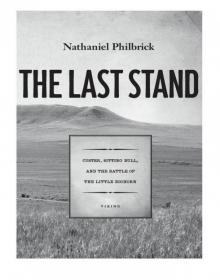 The Last Stand: Custer, Sitting Bull, and the Battle of the Little Bighorn
The Last Stand: Custer, Sitting Bull, and the Battle of the Little Bighorn In the Heart of the Sea: The Epic True Story That Inspired Moby-Dick
In the Heart of the Sea: The Epic True Story That Inspired Moby-Dick Away Off Shore: Nantucket Island and Its People, 1602-1890
Away Off Shore: Nantucket Island and Its People, 1602-1890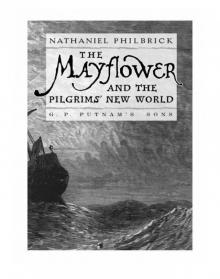 The Mayflower and the Pilgrims' New World
The Mayflower and the Pilgrims' New World The Last Stand: Custer, Sitting Bull and the Battle of the Little Big Horn
The Last Stand: Custer, Sitting Bull and the Battle of the Little Big Horn Second Wind
Second Wind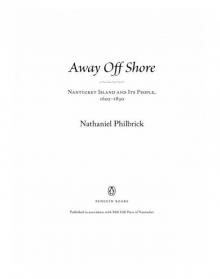 Away Off Shore
Away Off Shore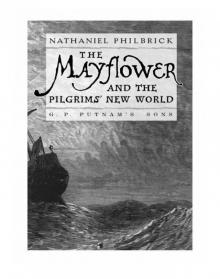 The Mayflower and the Pilgrims' New World*
The Mayflower and the Pilgrims' New World*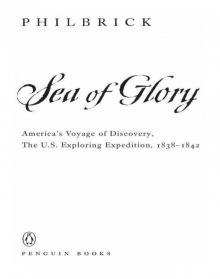 Sea of Glory
Sea of Glory In the Heart of the Sea
In the Heart of the Sea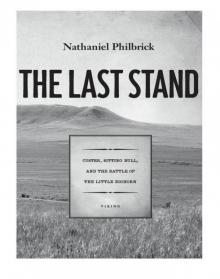 The Last Stand
The Last Stand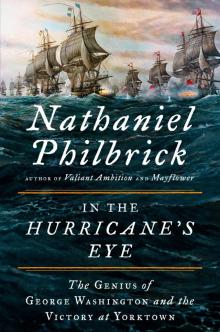 In the Hurricane's Eye
In the Hurricane's Eye